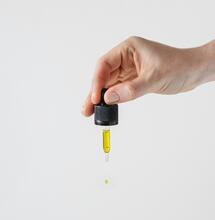Weed Sucks!

Hemp can be used in many commercial and industrial products. However, one of Hemp's lesser-known but arguably most important and beneficial roles is its status as a "hyper-accumulator."
A hyper-accumulator is a plant capable of growing in water with very high concentrations of compounds that can be dangerous to humans, animals, or other plant life, such as Heavy Metals, Radioactive Elements, Pesticides, Herbicides, Fungicides, explosives and fuels. Hyper-accumulator plants extract the contaminants from the soil, storing large amounts in leaves and roots.
Our dependence on fossil fuels and high waste industrial processes has left many grounds too toxic to be useful for farming. This is where hyper-accumulator plants offer a real solution. Phytoremediation removes toxins, like chemicals and heavy metals, from soil and groundwater in 3 ways.
Phytoaccumulation: The plant absorbs contaminants in the surrounding soil. Toxins are collected in the shoots and leaves of the plant and stored until the plant dies, decays, and then repeats the process.
Phytovolatilization: Plants absorb organic contaminants, then releases them during transpiration into the atmosphere.
Phytodegradation: Plants not only consumes the contaminants but can metabolize and destroy them entirely.
An Italian study published in 2003 showed that Hemp could absorb cadmium, chromium, magnesium and nickel from the soil. Amazingly high concentrations of the heavy metals had little effect on the plant itself.
Pollutants from industrial manufacturing, chemical-heavy farming practices, landfills, and toxic waste sites, as well as automobiles, have been infiltrating our environment for decades. Hemp can decontaminate soil very effectively whilst requiring fewer resources and having a short growing cycle.
One of the most notable places where Hyper-accumulator plants have been introduced is in the area surrounding the site of the worlds worst nuclear disaster at The Chernobyl Power plant in Pripyat, Ukraine.
Four years after the 1986 explosion, high concentrations of toxic metals including lead, caesium-137, strontium-90 and plutonium were found in the soil and the tissues of plants and animals within the 30km exclusion zone. It was decided to try and reduce soil contamination by using hyper-accumulator plants, starting immediately.
Various hyperaccumulators have been utilized in Chernobyl over the years. The Hemp proved highly efficient, however, proving to be one of the best phytoremediation plants they have been able to find.
The Hemp grown in these areas is still helpful in other ways as it can still be safely distilled into ethanol as a biofuel.
In Puglia, Italy, The Ilva steel plant has poisoned local soil, plants, animals, and human residents for decades with toxic emissions. As a result, grazing livestock is prohibited within a 20km radius of the plant.
To correct the damage, farmers began planting millions of cannabis plants in 2012. Since then, the local area of hemp cultivation has increased from 3 to 300 hectares. Around 100 farmers are now growing Hemp, with a processing plant being opened to convert the hemp harvest into fibre for clothing and construction.
Following the Fukushima Dai-ichi nuclear power plant accident in 2011, Japan called to implement hemp phytoremediation. However, due to the Japanese Cannabis Control Laws, Hemp is challenging to obtain. Fukushima residents have therefore attempted phytoremediation by planting millions of other hyper-accumulators like sunflowers, field mustard.
Hemp could benefit thousands of contaminated sites across the globe as a proven tool in the battle to repair the damage that we have done to our soils and ecosystems. It is estimated there are 30,000 sites requiring remediation in the US alone.







